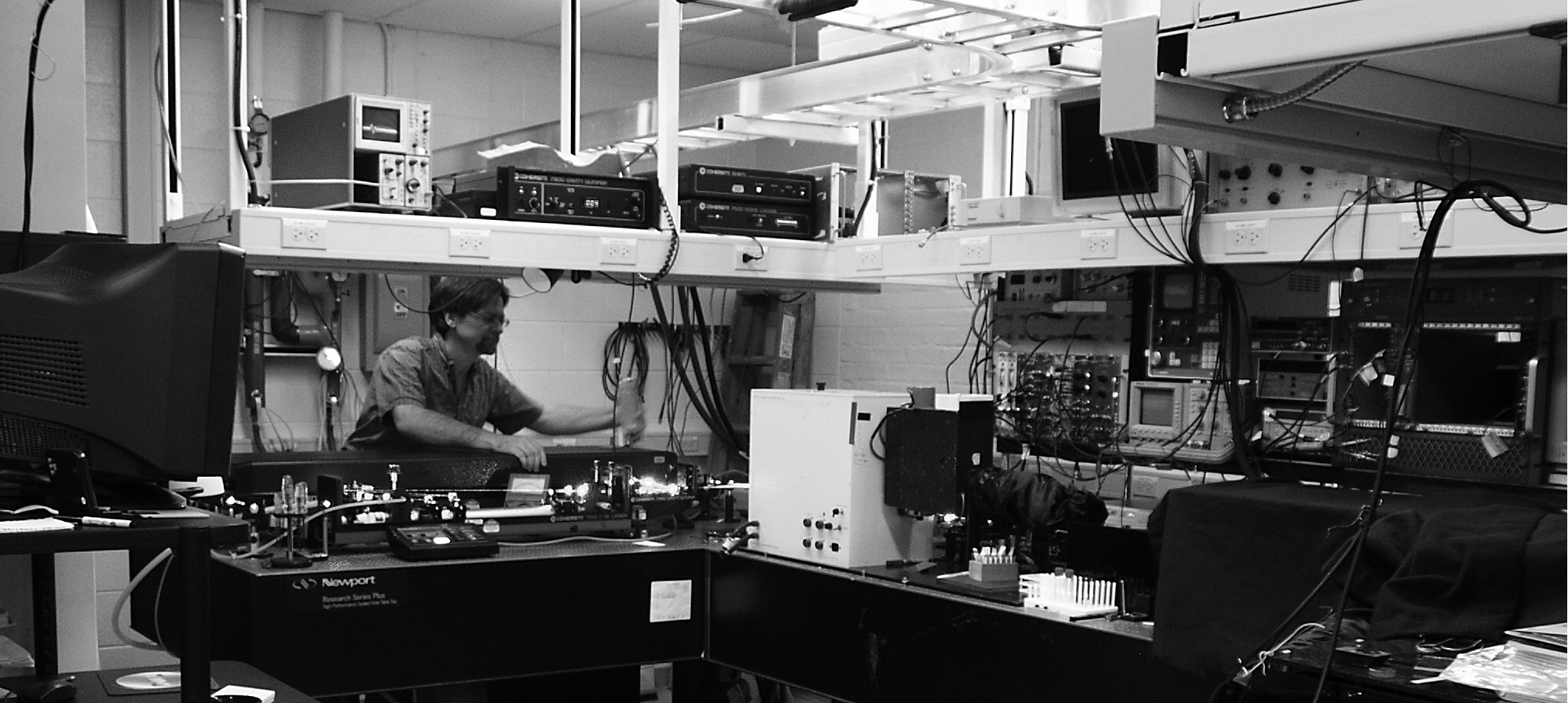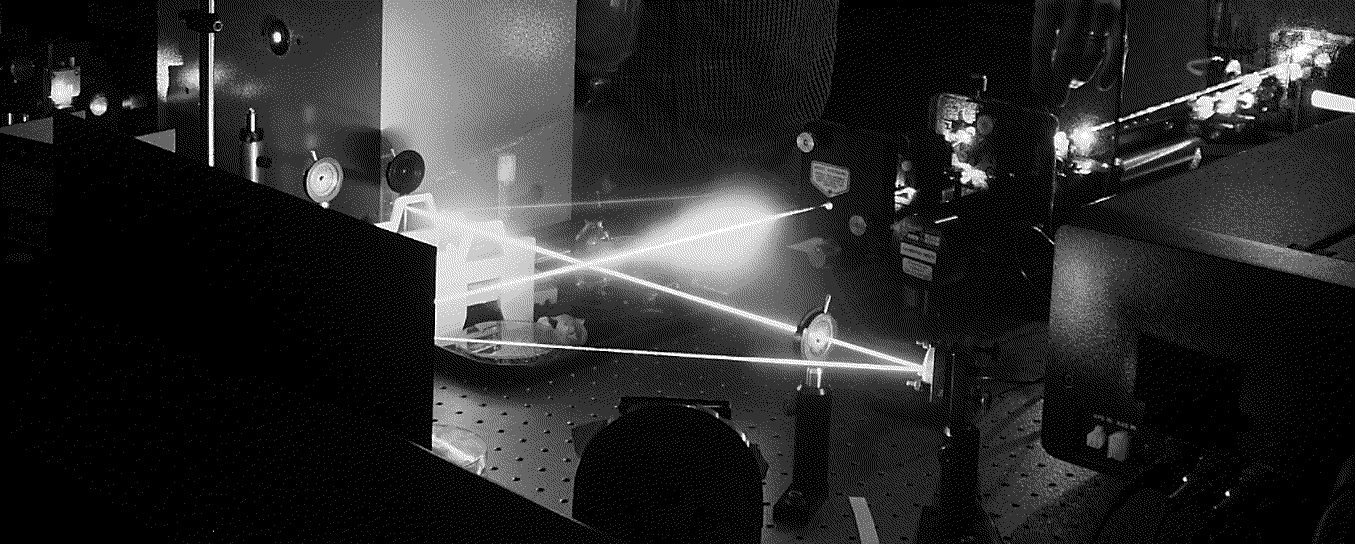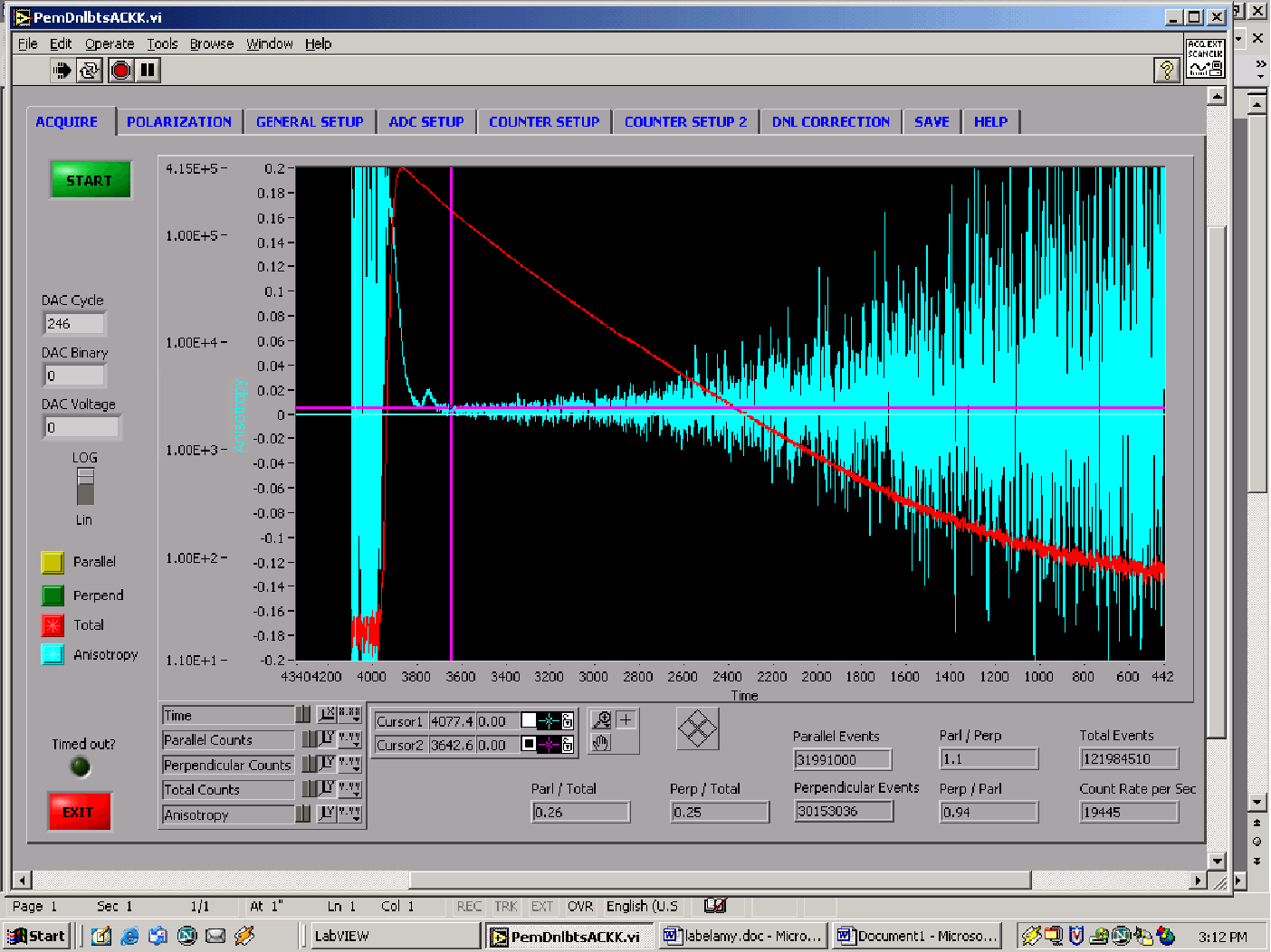

|
|
Fluorescence
Anisotropy systems based upon photoelastic modulation (PEM) provide
highly precise determination of anisotropy and can be utilized to
measure other chiro-optic phenomena such as Fluorescence detected CD
(FDCD) and Time-resolved circularly polarized fluorescence or
phosphorescence. |
 |
 |
 |
Time-Resolved
Flourescence and Anisotropy acquisition electronics developed in this
laboratory (with Steve Parus, Chemistry Electronics Shop).
Utilizing the Time Correlated Single Photon Counting procedure(TCSPC)
and microchannel plate photomultiplier (MCP) technology, resolution of
10's of picosecond decay times are attainable. Red; Time-resolved fluorescence decay of Fluorescein labeled protein. Blue: Time-resolved fluorescence anisotropy decay of same molecule. Entire window is approximately 50ns wide. Anisotropy decay is 175psec after deconvolution. |